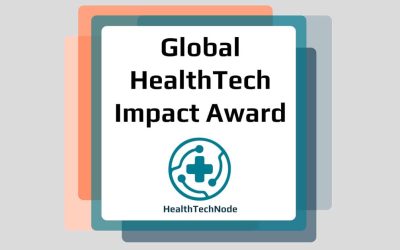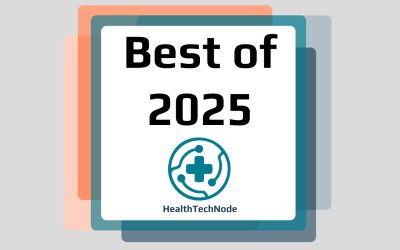The Future of HealthTech: Key Trends to Watch (2025 Edition)
Health technology in 2025 is defined by two forces running in parallel: rapid capability gains (AI, data liquidity, edge computing) and rising constraints (cybersecurity, governance, reimbursement, regulation). This outlook distills what matters now—and how to turn it into momentum over the next 90 days.
1) Cybersecurity Becomes a Board-Level Operating Constraint
 After a year of system-wide disruption, cybersecurity is no longer a “risk to be managed”; it is a gating factor for growth and contracting. Expect elevated due diligence on MFA coverage, network segmentation, vendor risk, incident response playbooks, and recovery time objectives. Buyers increasingly ask startups for concrete evidence: tabletop results, SBOMs, immutable backups, and role-based access enforcement.
After a year of system-wide disruption, cybersecurity is no longer a “risk to be managed”; it is a gating factor for growth and contracting. Expect elevated due diligence on MFA coverage, network segmentation, vendor risk, incident response playbooks, and recovery time objectives. Buyers increasingly ask startups for concrete evidence: tabletop results, SBOMs, immutable backups, and role-based access enforcement.
What to do
- Adopt healthcare-specific cybersecurity performance goals and prove progress via quarterly metrics.
- Harden identity: enforce phishing-resistant MFA, least privilege, and break-glass auditing.
- Reduce blast radius: segment networks, isolate backups, and validate restore times.
- Ship a security one-pager with every sales deck: risks addressed, controls in place, attestations.
2) Interoperability at Scale: TEFCA Moves from Pilot to Plumbing
Nationwide exchange is shifting from aspiration to infrastructure. As more organizations connect through TEFCA, cross-network document exchange and query-based retrieval become a baseline. The practical upside: simpler data acquisition for care coordination, quality reporting, and referral management—and new expectations from customers that vendors “just work” across networks.
What to do
- Map where TEFCA can replace custom connections in your workflows (referrals, HIE queries, transitions of care).
- Build “exchange aware” features: automatic document retrieval, deduplication, identity matching, and provenance.
- Instrument success: track match rate, retrieval speed, and clinician time saved.
3) Prior Authorization Automation (FHIR APIs) Changes Payer–Provider Data Flows
New rules push payers to expose prior authorization status and reasoning via FHIR APIs, setting the stage for less opaque, more automatable utilization management. Over the medium term, expect substantial workflow redesign in rev cycle, referral management, and care navigation products.
What to do
- Prioritize payer integrations that support FHIR-based prior auth endpoints and EHR inbox delivery.
- Design for transparency: surface required documentation early with dynamic checklists.
- Quantify value: measure denial rate reduction, faster decisions, and fewer touches per case.
4) Ambient AI and Workflow Automation in Clinical Operations
 Ambient documentation and AI-assisted workflows continue to expand across specialties, while regulators raise the bar on transparency and risk management for decision support. The winners pair model performance with explainability: citations, data lineage, and clear model limitations at the point of use.
Ambient documentation and AI-assisted workflows continue to expand across specialties, while regulators raise the bar on transparency and risk management for decision support. The winners pair model performance with explainability: citations, data lineage, and clear model limitations at the point of use.
What to do
- Publish “nutrition labels” for decision support: evidence sources, freshness, known gaps, and human-in-the-loop steps.
- Instrument documentation AI with hard outcomes: note-finalization time, edit rates, and after-visit summary accuracy.
- Add guardrails: safe-defaults, PII controls, and on-prem or VPC isolation for sensitive workflows.
5) Edge AI and On-Device Intelligence in Wearables and Diagnostics
More signal processing and inference is moving to the edge—sensors, smartphones, and medical devices—reducing latency and cloud costs while improving privacy. Expect hybrid patterns: on-device pre-screening with secure escalation to cloud models for confirmation and longitudinal analysis.
What to do
- Define split-compute architectures: which steps must be on-device vs. in-cloud, and why.
- Plan for field updates: model versioning, rollback, and post-market surveillance telemetry.
- Quantify edge wins: power draw, inference latency, connectivity independence, PHI exposure reduction.
6) Virtual Care Normalizes as Pandemic Flexibilities Recede
Telehealth is settling into a durable, hybrid role. Some pandemic-era Medicare flexibilities sunset or narrow, even as others continue through 2025. Strategy shifts from “telehealth everywhere” to targeted virtual-first pathways where outcomes and economics are strongest.
What to do
- Re-evaluate service lines for virtual suitability (behavioral health, chronic disease management, follow-ups).
- Align coding and supervision policies for 2025; update scheduling and consent flows accordingly.
- Publish patient-facing access standards: wait times, language support, and device requirements.
7) Hospital-at-Home Seeks Stability
Hospital-at-home programs continue, but long-term certainty depends on legislation and CMS policy. Providers will prioritize conditions and geographies where logistics, staffing, and payer alignment are strongest—and demand tighter vendor SLAs for in-home monitoring, response, and supply.
What to do
- Design bundled workflows (kit logistics, RPM, escalation) with explicit time-to-intervention targets.
- Quantify the delta: readmission rates, LOS reduction, patient experience, and full-cost comparisons to inpatient.
- Structure payer pilots with clear outcome thresholds and step-up/step-down criteria.
8) Global Governance: EU AI Act Impacts Medical AI
AI that is a medical device—or a safety component of one—lands in the EU’s “high-risk” bucket with obligations around risk management, data governance, technical documentation, human oversight, and post-market monitoring. Even U.S.-only firms feel second-order effects via global customers and partners.
What to do
- Stand up an AI quality file: data sheets, testing plans, bias analysis, human oversight procedures.
- Build a single evidence backbone that satisfies both medical device and AI governance requirements.
- Create a readiness map by market: obligations, timelines, and affected product SKUs.
9) Care Orchestration Platforms and Longitudinal Data
With more interoperable data and payer APIs, platforms that orchestrate journeys—authorization to scheduling to follow-up—will outcompete point tools. Success depends on identity resolution, consent management, and a common event model across care settings.
10) Value-Based Care Fuels RPM/RTM and Outcomes-Tied Tools
Expect more RPM/RTM, digital therapeutics, and condition-specific programs tied to measurable outcomes. Products that can prove reduced utilization or demonstrable quality gains will have a fundraising and sales advantage.
Your 30/60/90-Day Activation Plan
Days 0–30: Baseline and Quick Wins
- Security: complete a 2-hour tabletop and publish a one-pager of controls and gaps.
- Interoperability: document your TEFCA-related use cases; identify where it replaces custom feeds.
- Virtual care: confirm 2025 coding/supervision rules for your top three services; update SOPs.
- AI governance: add source transparency and human-in-the-loop checkpoints to any decision support.
Days 31–60: Build Proof
- Ship one “exchange-aware” feature (auto-retrieval or deduplication) and measure time saved.
- Pilot a prior-auth integration with one payer; track denial rate and review time.
- Instrument ambient documentation with note-finalization time, edit %, and user satisfaction.
Days 61–90: Scale and Signal
- Publish outcome dashboards (security KPIs, exchange metrics, prior-auth cycle time).
- Negotiate SLAs across any hospital-at-home or RPM partners (response, uptime, escalation).
- Create two case studies: one clinical operations win, one rev-cycle win.
Executive Checklist
- Security program mapped to healthcare-specific goals; MFA everywhere; tested recovery.
- TEFCA strategy documented; exchange metrics live.
- Prior auth roadmap and payer pilots in flight.
- AI governance artifacts (transparency, oversight, telemetry) reviewed quarterly.
- Virtual care coding/supervision aligned; SOPs updated.
- Hospital-at-home/RPM SLAs and outcomes tracked.
FAQs
Which 2025 HealthTech trends should we prioritize first?
Start where buyers scrutinize most: cybersecurity readiness, interoperability at scale (TEFCA-aligned exchange), and prior authorization automation via FHIR. Then layer in ambient AI and care orchestration based on measurable outcomes.
Do we need to join TEFCA now or wait?
You don’t need TEFCA for every use case, but if your customers rely on cross-network exchange, begin aligning now. Identify a QHIN path, document use cases (referrals, transitions of care), and ship “exchange-aware” features like auto-retrieval and deduplication.
What evidence do buyers want for ambient AI and workflow automation?
Show note-finalization time saved, edit rates, citation transparency, guardrails for PHI, and a clear human-in-the-loop path. Include specialty-level results and before/after metrics.
How will prior authorization automation (FHIR APIs) change our roadmap?
Expect deeper payer integrations, earlier document collection, and status updates in-workflow. Plan for dynamic checklists, EHR inbox delivery, and tracking denial reductions and decision speed.
Where does virtual care still make sense in 2025?
Virtual-first shines in behavioral health, chronic condition management, follow-ups, and navigation. Validate with outcomes and reimbursement fit (coding, supervision) before expanding.
How does the EU AI Act affect U.S.-only vendors?
Even if you sell in the U.S., global customers and partners may expect EU-style transparency, risk management, and post-market monitoring. Build an AI quality file now to reduce friction later.
Latest News and Updates
Entries Open for the 2026 Global HealthTech Impact Award
Entries are open for HealthTechNode’s 2026 Global HealthTech Impact Award, honoring solutions that expand access, improve outcomes, and advance equity worldwide. Apply by January 16.
Best of 2025 HealthTechNode Awards Are Now Open
HealthTechNode’s inaugural Best of 2025 Awards are open. Enter by Nov 14 for Early Bird, final deadline Jan 9, winners announced Feb 9. Recognition, visibility, and PR.
How Awards Influence Adoption and Investment in HealthTech
Awards in HealthTech are more than recognition. They act as growth signals that accelerate adoption, trust, and investment outcomes when activated strategically.



